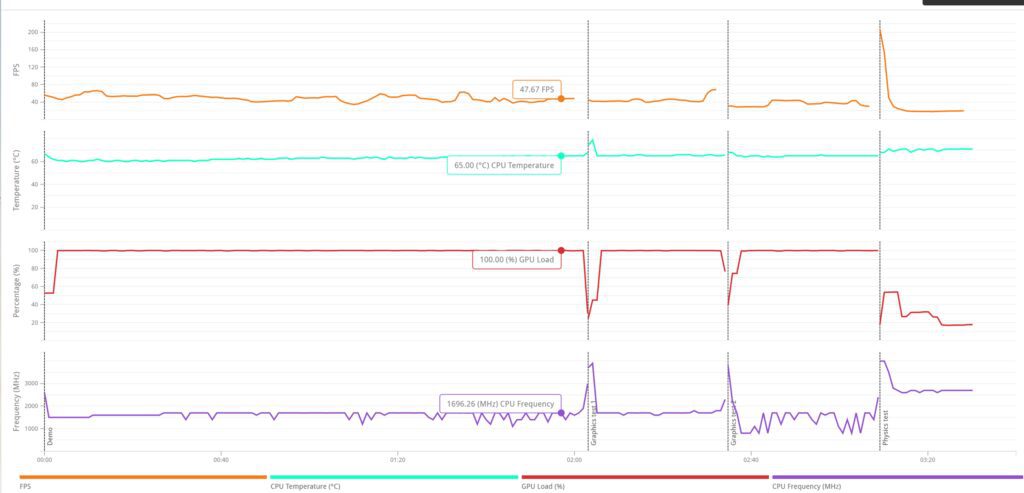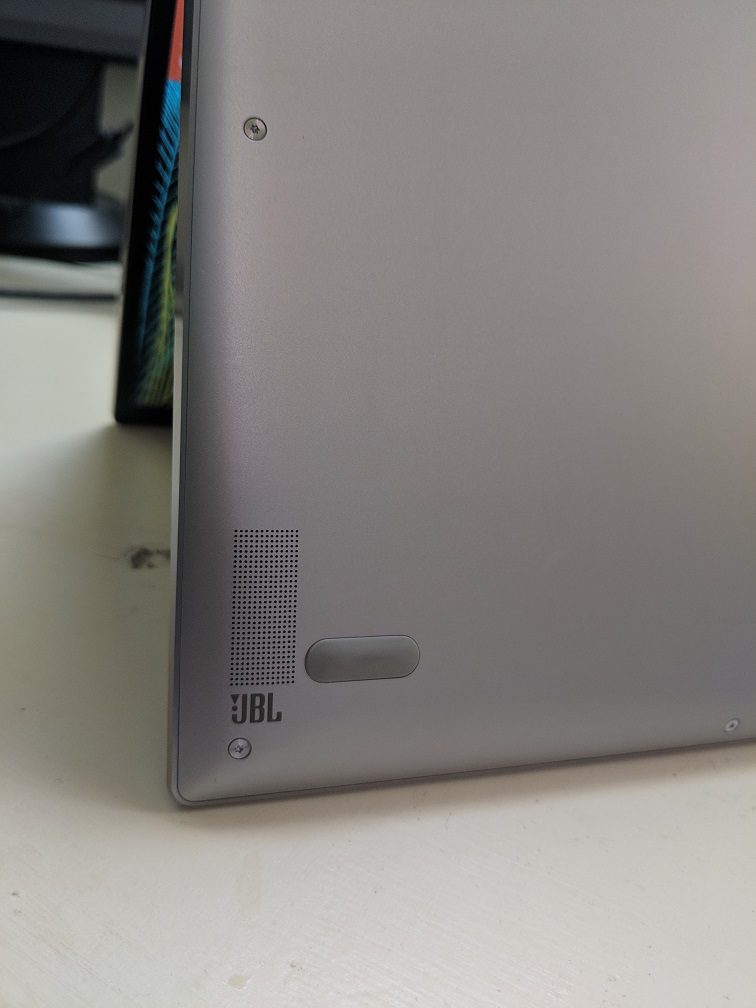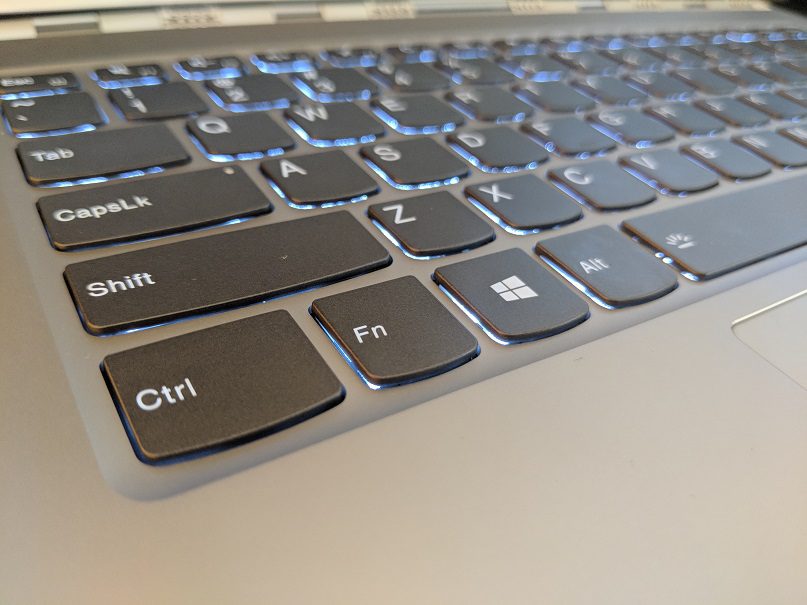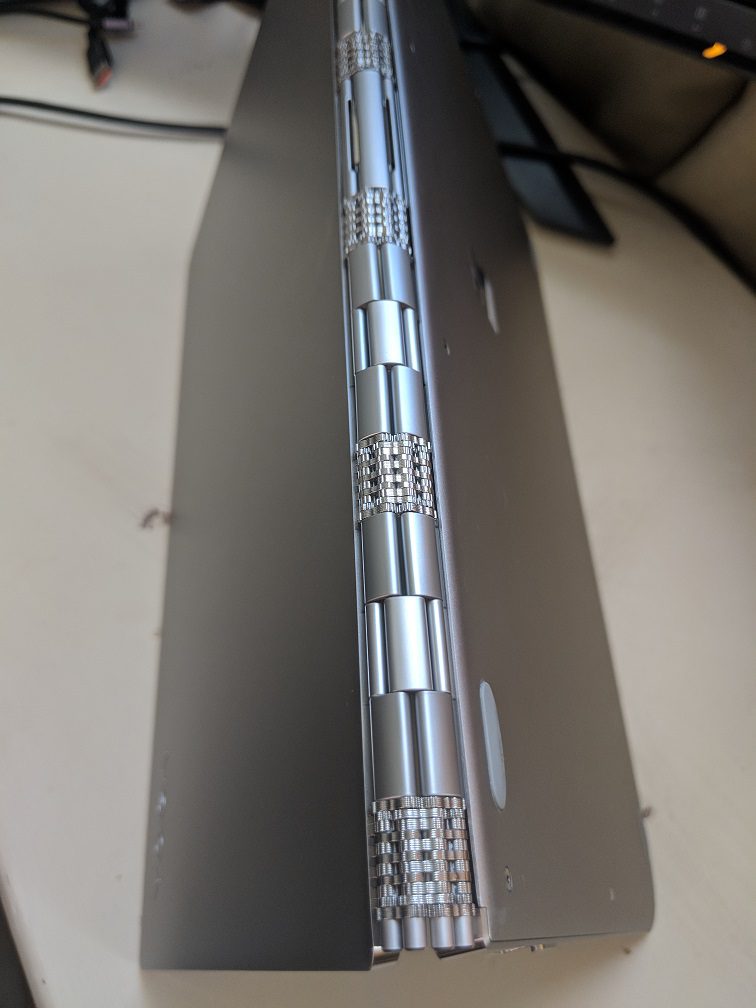Thanks to Lenovo for providing GWW with this review unit.
There is so much to love about Lenovo’s latest flagship ultrabook. It checks the most of important boxes in the ultrabook hierarchy of needs: a stellar display, efficient battery, comfortable keyboard, fast as a whip, and, well, ultra-portable. Importantly, as they typically do, Lenovo learned from their past generations of laptops and made this year’s Yoga 900-series their best yet.. Gone are the plastics from the chassis, awkward camera placement, and thick bezels from the display. No laptop is perfect, and the Yoga 920 is not immune to questionable design choices. But the positives here greatly outweigh the negatives. In fact, the Yoga 920 might be my favorite laptop of the year.
Specifications (as reviewed)
- CPU: 8th Generation Intel Core i7-8550U (1.8GHz 8MB L2 Cache)
- Display: 13.9″ UHD IPS (3840 x 2160) 10-point multitouch display
- Graphics: Intel Integrated HD 620
- Webcam: 720p HD camera with dual array microphone
- RAM: 16GB DDR 4
- Storage: 512GB PCIe SSD
- Battery: rated at 10.8 hours for this model (UHD display) and rated at 15.5 hours with the FHD display
- I/O: 1 x USB 3.0 | 2 x USB C (Thunderbolt, PowerDelivery & DisplayPort) | audio/mic jack
- Dimensions: 12.7″ x 8.8″ x 0.5″
- Weight: 3.02 lbs
Portability and Design
When your competition is the HP Spectre and Dell XPS, it’s hard to come out on top. Intel’s latest 8th generation CPUs have given every manufacturer a reason to refresh what were already excellent ultrabooks. But instead of settling for a CPU bump, which is impressive enough, many manufacturers have taken the opportunity to readdress their I/O. In this case, Lenovo equipped the Yoga 920 with two USB C ports; supporting Thunderbolt 3 (hint to gamers: you could connect an external GPU!). You’ll need a USB C adapter for HDMI, DVI, etc. if you intend on using an external display with the 920. But it does have a headphone jack!
The Yoga 920 is beautiful. It’s dressed with a CNC aluminium chassis and the display and base are connected by the premium Yoga signature watchband hinge. The hinge is more than just easy on the eyes. The hinge is strong and provides more stability (read: less screen wobble) in the Yoga’s various physical forms of use. The included Active Pen 2 benefits from the watchband hinge, which will make artists and creative folks happy. The pen is included in the package in most models of the 920, along with a plastic holster for it that plugs into the single USB 3.0 port. That makes traveling with the pen easier than other pen-equipped laptops, such as the Surface Pro. The pen itself is made of plastic, which doesn’t feel as premium as the Yoga 920 itself. This incongruity is forgivable to me, as I am not a heavy pen user.
As a traveler, one of the things I appreciate most about the Yoga 920 is it’s battery life. While I wasn’t able to reach the rated 10+ hours of battery life under my preferred conditions, I was able to make a two adjustments that got me there. First: I tuned my display to the “suggested” brightness, as prescribed by Windows 10. Second I changed the network connection settings to “always” be off when the laptop is asleep. My daily activities included a spattering of Office applications, Chrome with 6-10 tabs open at anytime, and a lot of YouTube at low volume settings. I used the laptop’s native display while unplugged from power. I’m happy with this and, considering the very strong quality of the display, I can live with it.
When you do plug power into the laptop and come off of the low brightness setting, suddenly everything pops. This 4K display is stunning. Colors are vivid, brightness is strong, and it all shines in tablet mode. I like to use tablet mode while I’m on conference calls. It allows me to walk around the office or my home and get other things done. At this point, 2-in-1 laptops/ultrabooks are part of our everyday computing experience. Meaning you either own one or know what they are and their value. Consequently, I don’t spend time on that aspect of the 920. It is time, however, to talk about my gripes with the 920.
There are four design choices for Lenovo to reconsider. First, the trackpad leaves much to be desired. For a laptop that feels premium in every other way, the trackpad is clunky and inelegant. My biggest gripe is not the general accuracy of trackpad for moving the cursor, but the feedback from hard-clicking. I’d say 1 in every 3 right-click attempts ends up as a left-click. Also the physical sound that comes from clicking sounds like a spring between two plastics. That may be what it is, but take a page from Razer on this one and make that sound and feeling more comfortable. Another design choice that boggles me is the power button placement. At this point it’s a standard characteristic of all Yoga devices, save for the ThinkPad X1 Yoga. Perhaps that means it’ll take some time to create change, but I know from a month of use that on the 13″ and 14″ Yoga ultrabooks it’s not uncommon to accidentally press the power button as it is on the side of the machine. I’d prefer to see the power button near the keyboard and underneath the display when the laptop is closed. The ThinkPad X1 Yoga’s power button is in the same area but it’s recessed into the chassis – this is a better implementation. Finally, I’d really like to see compatibility with Windows Hello facial recognition. The fingerprint scanner works very well as a form of biometric sign-in. But, for a premium device that ranges from $1,200 to $2,000 it should feature this premium sign-in option. In Lenovo’s defense, I’m not seeing this on any similarly priced laptops.
Something else to question are the rear-facing speakers. What’s great about the speaker placement is they actually project at you while the ultrabook is in tent mode. That makes a lot of sense, and I applaud it. I think other users would like to see these move to the palm rest area. In which case you’re risking palm-muting of the speakers. I like the speaker placement but I also can see why some would not.
Performance
Intel’s 8th generation Core i7 is wonderful, and you’ll experience the different from 7th generation more in multi-core applications that have been programmed to take advantage of it’s 4 cores. Typically, someone that spends $1000 or more on a laptop, even an ultrabook, is expecting to do more than just browse the web and watch Netflix. In which case, these new CPUs provide an impressive performance increase over prior generations. In the price bracket the Yoga 920 falls into, I expect users will require smooth video and photo editing, movie playback, and even some file conversion. What has surprised me about the 920 is how quiet it is. I only heard the fans spin up once, and it was brief. It was also appeared to be random as it occurred after a cold boot after I logged into Windows.
For daily use, I never heard the fans spin up, which make sense as I didn’t experience any uncomfortable heat.

During a 3DMark benchmark (Cloud Gate), with the GPU at 100% load and CPU at around 65% load, the laptop’s core temperature did not exceed 65 degrees.
Who is this For?
Lenovo really hit a home run with the Yoga 920. I would recommend it for folks that work from home and/travel. It’s also a great fit for students who can afford it. With an MSRP price range from $1,200 to $2,000 it’s not overpriced if you value what you’re getting with it (premium chassis, excellent display and battery life). Earlier this year I reviewed the Yoga 720 13, which is similar to this device but smaller and with less compute power. I also reviewed the more capable Yoga 720 15, which has a dedicated GPU for gaming. These laptops don’t have quite the level of premium components as the 920. The Yoga 720 13 may be found at a lower price than the 920, but know what you’re getting into. Now, at the beginning of this review I said the 920 was in the running for being my favorite laptop this year. It’s darn close. Personally I find the 13″ laptop form factor with the sub-$1,000 price point to be the sweet spot for my use (working, teaching, traveling). Thus, the 720 13 is still my favorite ultrabook this year. But if money weren’t a factor, the 920 would be my ultrabook of choice. It’s a nearly perfect ultrabook.






